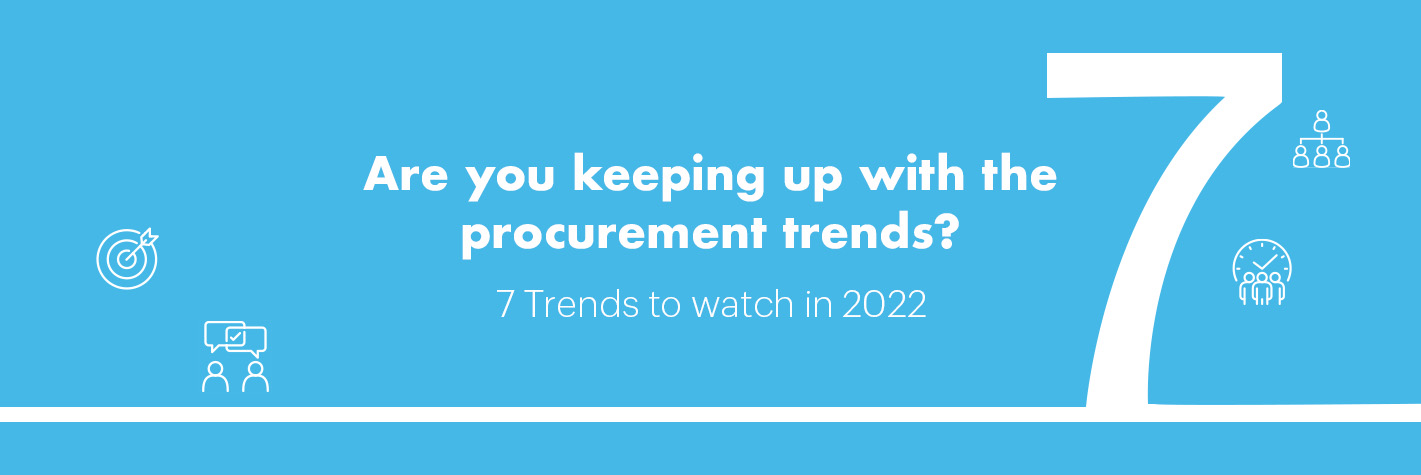Businesses have to pay attention to emerging technology if they want to remain relevant, successful, and competitive—and procurement is no different. Procurement, supplier performance management, spend analysis, supplier information management, contract management, and other processes are all becoming easier with the help of technology. The range of software, hardware, and accessories on the market today has expanded—and finding the best technology for getting the most return on your investment is the ideal way forward.
For this, we must first understand the major trends that are influencing the procurement process, so we can make the most of new technology. This article will assist you in choosing the appropriate tools and technology for your organization.
Tools to collaborate anytime, anywhere, and everywhere
Working hasn't been the same since the pandemic—collaboration has shifted from being a perk to being a necessity. Collaboration tools are now expected to work from anywhere, at any time, and on almost any device. In the procurement arena, seamless collaboration not only promotes cost savings but also makes the whole purchase experience less hectic. So how do you do it? Simply put, with workflow orchestration software.
The key to advanced collaboration is aligning strategies and developing a compelling plan that defines mutual purposes. Workflow orchestration technology can help you foster a culture that is transparent, consistent in communication, and long-lasting. By improving internal cooperation, businesses can boost productivity and save on costs—and by strengthening external communication, they can lower supply chain risks and enhance supplier relationships. This two-way communication, with just one tool, is perhaps the best part of using workflow orchestration.
Other perks of using workflow orchestration software includes easy allocation of resources, systematic and standardized workflow management, reporting and measuring KPIs, and many more.
Shifting to zero-based budgeting (ZBB)
There has been a significant movement to the ZBB method over the last few years. ZBB focuses on which expenses to maintain, as opposed to typical budgeting and cost management techniques that are concerned with which expenditures to cut. This enables businesses to allocate funding to areas that produce the most value.
ZBB examines every expense and accounts for every penny spent. In order to offer motivation, transparency, and control—and to ingrain an accountability culture—category and budget ownership are put in place. Almost all cost kinds, including capital expenses, operational expenses, and cost of goods sold, are budgeted using this technique.
Low-code and no-code platforms
Modern procurement and supply chain solutions, and how they integrate with other systems, are steadily changing. Just as with drag-and-drop interfaces, a business can gain complete control over their workflows, and even changes in the system can be implemented with less help from the IT department, owing to low-code workflow automation systems.
Rule-based algorithms also allow workflows to change, so they can be tailored to the particular needs of procurement teams. Supply chain and procurement management processes can adapt rapidly when necessary, with customizable procedures, and develop new capabilities.
The low-code and no-code approach can break down the barrier between ideas and solutions as organizations strive to become more flexible and inventive.
Automate wherever possible
Automation not only aids in everyday tasks but also contributes immensely to improving operational cost efficiency. From assigning teams to pushing items for approval, necessary parts of the process can be automated to reduce human intervention—and human error.
The procurement process can be automated in two different ways. In order to promote quicker and more precise decision-making, business process automation (BPA), or workflow orchestration that concentrates on the entire process, should be your choice. RPA, on the other hand, makes repetitive, manual, and low-value-add individual tasks easier (e.g., data entry). It aims to decrease human mistakes and lower labor costs.
Organizations can discover business requirements, reduce risks, remove repetitive tasks, improve supplier management, and more, by implementing automation technology—which is why it's wise to automate your procurement process as soon as possible.
Develop a future-ready model
Procurement departments must change the way they work—and work with internal and external stakeholders—if they want to be leaders in the modern market.
Adopting an agile operating model can make it easier for procurement departments to scale up swiftly or down in response to unforeseen supply difficulties.
A cross-functional "sprint team" can also be assigned to quickly onboard a new supplier or create a "negotiation factory" to deliver contract negotiations in an assembly-line-like way. These are just a couple of examples of how agile methodologies can be used to address important strategic concerns.
Data analytics
Businesses can discover more about bottlenecks in their business and develop creative solutions with the use of a data-driven strategy. Data analytics have the power to encourage organizational reforms and eliminate ambiguous decision-making, wasteful resource utilization, and more.
It's important to integrate analytics into the decision-making process, rather than considering it a distinct project, if you want to have an analytically driven strategy. For this, it's crucial to choose tools that have reporting features in built.
Technologies empowered with cloud services
Software as a service (SaaS) and cloud computing support numerous organizational functions—especially in procurement. In a nutshell, businesses can shift to the cloud in order to access the most recent procurement automation solution, without having to spend extraordinary money, labor hours, or other resources, as they would with conventional software.
Organizations can advance their procurement operations using a variety of subscription-based cloud technologies which decrease direct investment, save on operating costs, and increase real-time data exchange. As a result, it's easy to incorporate cutting-edge technology into the current digital landscape, to enhance organizational processes more effectively while lowering the total cost of ownership.
Final thoughts
The business world is awash in new technologies, with increased communication tools, cloud computing, native mobility, and quantitative decision-making. In order to efficiently manage increasingly complicated procurement procedures, organizations require more than just transactional solutions.
Organizations can now use the procurement process as an opportunity to add value to their organization. By adopting these latest trends in procurement, businesses can become strategic, data influenced, and extraordinary!








